Regional Delimitation of PM2.5 Pollution Using Spatial Cluster for Monitoring Sites: A Case Study of Xianyang, China
Abstract
1. Introduction
2. Methods
2.1. Data Collection
2.2. Data Preparation
2.3. Hierarchical Clustering
3. Results
3.1. Selecting the Number of Clusters
3.2. Delimit the Polluted Regions
3.3. Correlation Analysis
4. Discussion
4.1. PM2.5 Concentration in Different Region
4.2. Comparison to Administrative Districts
4.3. Social and Economic Impact Analysis
4.4. Spatiotemporal Characteristics
5. Sensitivity Analysis
5.1. Invariance against Missing Data
5.2. Invariance against Pollution Degree
5.3. Invariance against k Parameter and Linakge Function
6. Conclusions
Author Contributions
Funding
Conflicts of Interest
References
- Chen, Z.; Cai, J.; Gao, B.; Xu, B.; Dai, S.; He, B.; Xie, X. Detecting the causality influence of individual meteorological factors on local PM2.5 concentration in the Jing-Jin-Ji region. Sci. Rep. 2017, 7, 40735. [Google Scholar] [CrossRef]
- Deng, Q.; Yang, K.; Yi Luo, Y. Spatiotemporal Patterns of PM2.5 in the Beijing–Tianjin–Hebei Region during 2013–2016. Geol. Ecol. Landsc. 2017, 1, 95–103. [Google Scholar] [CrossRef]
- Di, Q.; Kloog, I.; Koutrakis, P.; Lyapustin, A.; Wang, Y.; Schwartz, J. Assessing PM2.5 Exposures with High Spatiotemporal Resolution across the Continental United States. Environ. Sci. Technol. 2016, 50, 4712–4721. [Google Scholar] [CrossRef] [PubMed]
- Govender, P.; Sivakumar, V. Application of k-means and hierarchical clustering techniques for analysis of air pollution: A review (1980–2019). Atmos. Pollut. Res. 2020, 11, 40–56. [Google Scholar] [CrossRef]
- Hill, L.; Edwards, R.; Turner, J.R.; Argo, Y.D.; Olkhanud, P.B.; Odsuren, M.; Guttikunda, S.; Ochir, C.; Smith, K.R. Health assessment of future PM2.5 exposures from indoor, outdoor, and secondhand tobacco smoke concentrations under alternative policy pathways in Ulaanbaatar, Mongolia. PLoS ONE 2017, 12, e0186834. [Google Scholar] [CrossRef] [PubMed]
- Huang, H.; Fu, D.; Qi, W. Effect of driving restrictions on air quality in Lanzhou, China: Analysis integrated with internet data source. J. Clean. Prod. 2017, 142, 1013–1020. [Google Scholar] [CrossRef]
- Li, L.; Wu, A.H.; Cheng, I.; Chen, J.-C.; Wu, J. Spatiotemporal estimation of historical PM 2.5 concentrations using PM 10, meteorological variables, and spatial effect. Atmos. Environ. 2017, 166, 182–191. [Google Scholar] [CrossRef]
- Li, L.; Zhang, J.; Meng, X.; Fang, Y.; Ge, Y.; Wang, J.; Wang, C.; Wu, J.; Kan, H. Estimation of PM2.5 concentrations at a high spatiotemporal resolution using constrained mixed-effect bagging models with MAIAC aerosol optical depth. Remote Sens. Environ. 2018, 217, 573–586. [Google Scholar] [CrossRef]
- Liu, J.; Li, W.; Wu, J. A framework for delineating the regional boundaries of PM2.5 pollution: A case study of China. Environ. Pollut. 2018, 235, 642–651. [Google Scholar] [CrossRef]
- Liu, X.; Chen, Q.; Che, H.; Zhang, R.; Gui, K.; Zhang, H.; Zhao, T. Spatial distribution and temporal variation of aerosol optical depth in the Sichuan basin, China, the recent ten years. Atmos. Environ. 2016, 147, 434–445. [Google Scholar] [CrossRef]
- Samet, J.M.; Dominici, F.; Curriero, F.C.; Coursac, I.; Zeger, S.L. Fine Particulate Air Pollution and Mortality in 20 US Cities, 1987–1994. N. Engl. J. Med. 2000, 343, 1742–1749. [Google Scholar] [CrossRef]
- Shen, Y.; Zhang, L.; Fang, X.; Ji, H.; Li, X.; Zhao, Z. Spatiotemporal patterns of recent PM2.5 concentrations over typical urban agglomerations in China. Sci. Total Environ. 2019, 655, 13–26. [Google Scholar] [CrossRef]
- Song, C.; He, J.; Wu, L.; Jin, T.; Chen, X.; Li, R.; Ren, P.; Zhang, L.; Mao, H. Health burden attributable to ambient PM2.5 in China. Environ. Pollut. 2017, 223, 575–586. [Google Scholar] [CrossRef]
- Viard, V.B.; Fu, S. The effect of Beijing’s driving restrictions on pollution and economic activity. J. Public Econ. 2015, 125, 98–115. [Google Scholar] [CrossRef]
- Wang, B.; Liu, S.; Du, Q.; Yan, Y. Long Term Causality Analyses of Industrial Pollutants and Meteorological Factors on PM2.5 Concentrations in Zhejiang Province. In Proceedings of the 2018 5th International Conference on Information Science and Control Engineering (ICISCE), Zhengzhou, China, 20–22 July 2018; Institute of Electrical and Electronics Engineers (IEEE): Piscataway, NJ, USA, 2018; pp. 301–305. [Google Scholar]
- Wang, L.; Zhang, F.; Pilot, E.; Yu, J.; Nie, C.; Holdaway, J.; Yang, L.-S.; Li, Y.; Wang, W.; Vardoulakis, S.; et al. Taking Action on Air Pollution Control in the Beijing-Tianjin-Hebei (BTH) Region: Progress, Challenges and Opportunities. Int. J. Environ. Res. Public Health 2018, 15, 306. [Google Scholar] [CrossRef]
- Xu, H.; Ho, S.S.H.; Gao, M.; Cao, J.; Guinot, B.; Ho, K.F.; Long, X.; Wang, J.; Shen, Z.; Liu, S.; et al. Microscale spatial distribution and health assessment of PM2.5-bound polycyclic aromatic hydrocarbons (PAHs) at nine communities in Xi’an, China. Environ. Pollut. 2016, 218, 1065–1073. [Google Scholar] [CrossRef]
- Xu, Y.; Ying, Q.; Hu, J.; Gao, Y.; Yang, Y.; Wang, D.; Zhang, H. Spatial and temporal variations in criteria air pollutants in three typical terrain regions in Shaanxi, China, during 2015. Air Qual. Atmos. Health 2017, 11, 95–109. [Google Scholar] [CrossRef]
- Yan, D.; Lei, Y.; Shi, Y.; Zhu, Q.; Li, L.; Zhang, Z. Evolution of the spatiotemporal pattern of PM2.5 concentrations in China–A case study from the Beijing-Tianjin-Hebei region. Atmos. Environ. 2018, 183, 225–233. [Google Scholar] [CrossRef]
- Yuan, Y.; Liu, S.; Castro, R.; Pan, X. PM2.5 Monitoring and Mitigation in the Cities of China. Environ. Sci. Technol. 2012, 46, 3627–3628. [Google Scholar] [CrossRef]
- Zhan, Y.; Luo, Y.; Deng, X.; Chen, H.; Grieneisen, M.L.; Shen, X.; Zhu, L.; Zhang, M. Spatiotemporal prediction of continuous daily PM2.5 concentrations across China using a spatially explicit machine learning algorithm. Atmos. Environ. 2017, 155, 129–139. [Google Scholar] [CrossRef]
- Zhang, D.; Zhang, M.; Zhang, B. Study on the Response of PM2.5 Pollution to Different Geographical Factors. In Proceedings of the 2018 26th International Conference on Geoinformatics, Kunming, China, 28–30 June 2018; Institute of Electrical and Electronics Engineers (IEEE): Piscataway, NJ, USA, 2018; pp. 1–5. [Google Scholar]
- Zhao, S.; Yu, Y.; Yin, D.; Qin, D.; He, J.; Dong, L. Spatial patterns and temporal variations of six criteria air pollutants during 2015 to 2017 in the city clusters of Sichuan Basin, China. Sci. Total Environ. 2018, 624, 540–557. [Google Scholar] [CrossRef] [PubMed]
- National Air Quality Data Release System. Available online: http://106.37.208.233:20035/ (accessed on 10 August 2020).
- Shaanxi Air Quality Real-time Publish System. Available online: http://113.140.66.226:8024/sxAQIWeb/PageCity.aspx?cityCode=NjEwNDAw (accessed on 10 August 2020).
- Zhuang, Y.; Chen, D.; Li, R.; Chen, Z.; Cai, J.; He, B.; Gao, B.; Cheng, N.; Huang, Y. Understanding the Influence of Crop Residue Burning on PM2.5 and PM10 Concentrations in China from 2013 to 2017 Using MODIS Data. Int. J. Environ. Res. Public Health 2018, 15, 1504. [Google Scholar] [CrossRef] [PubMed]
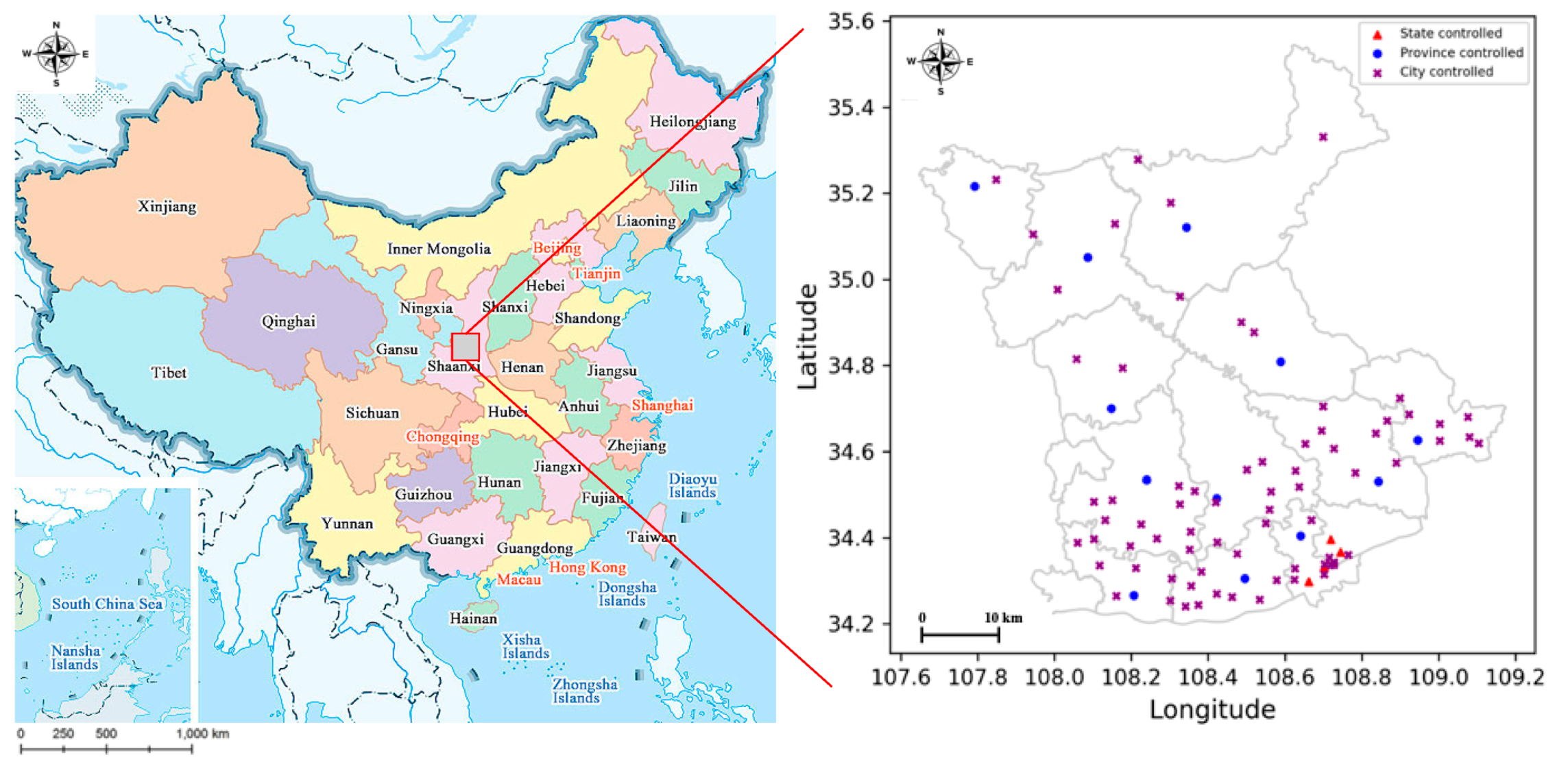
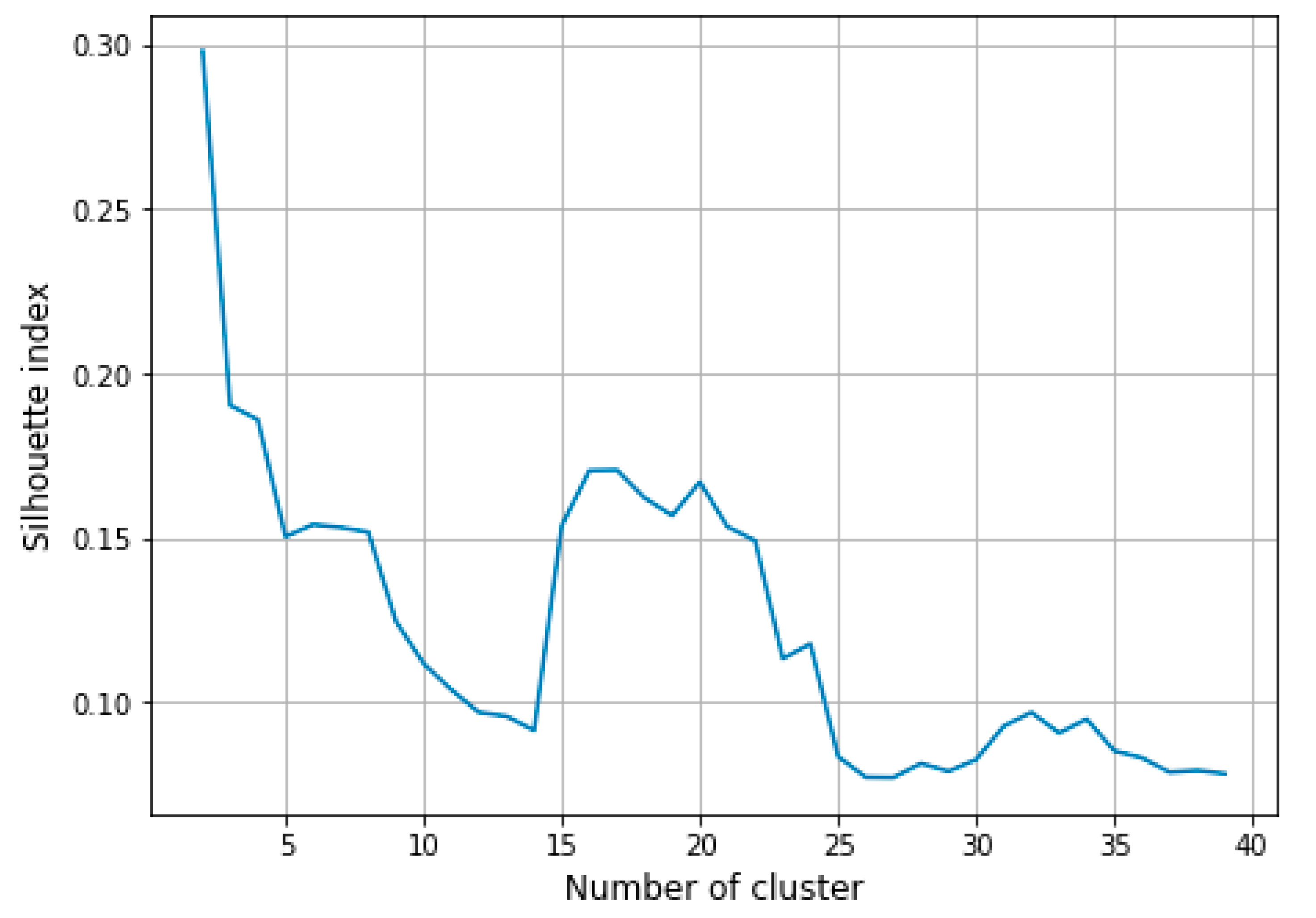

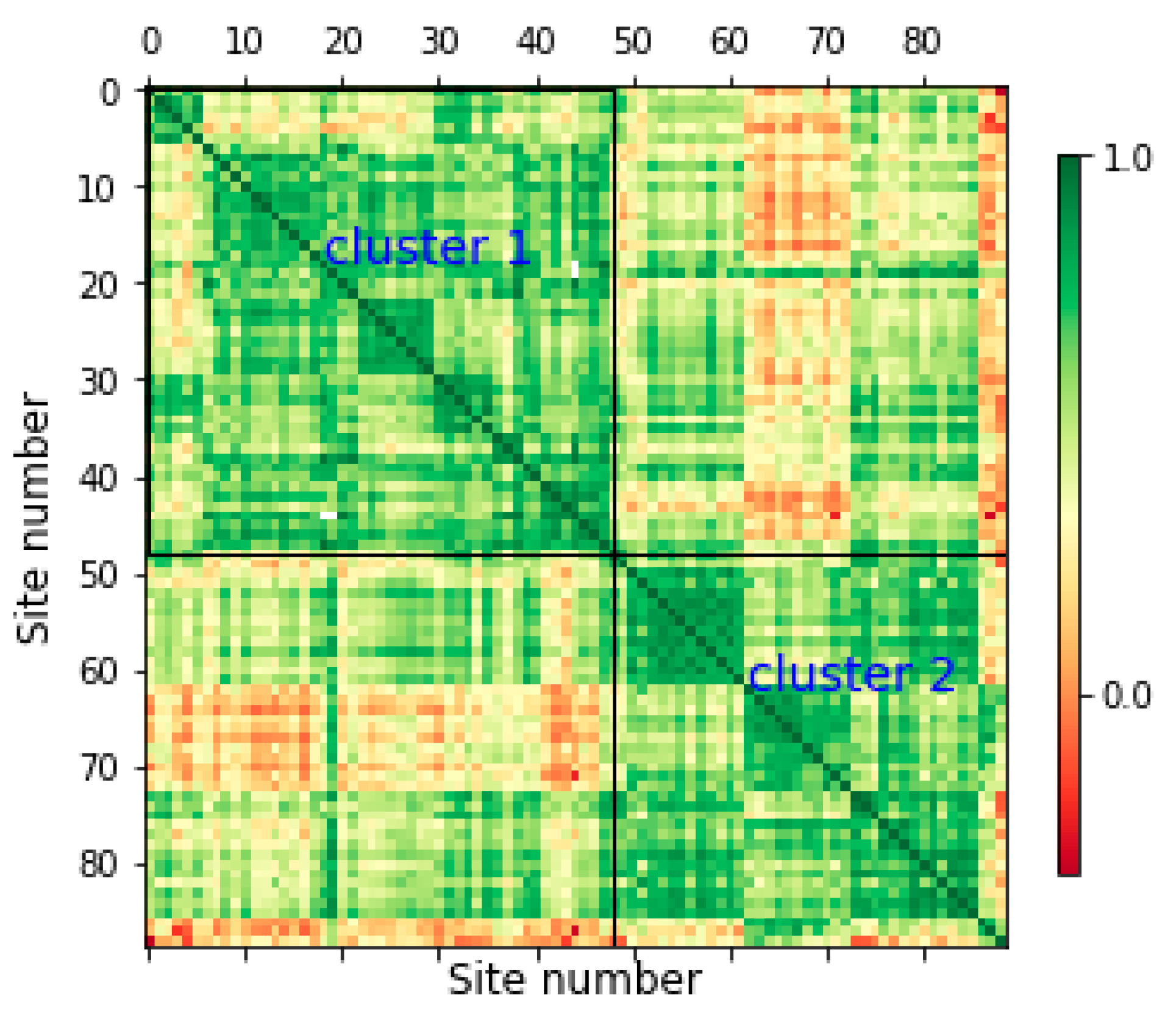
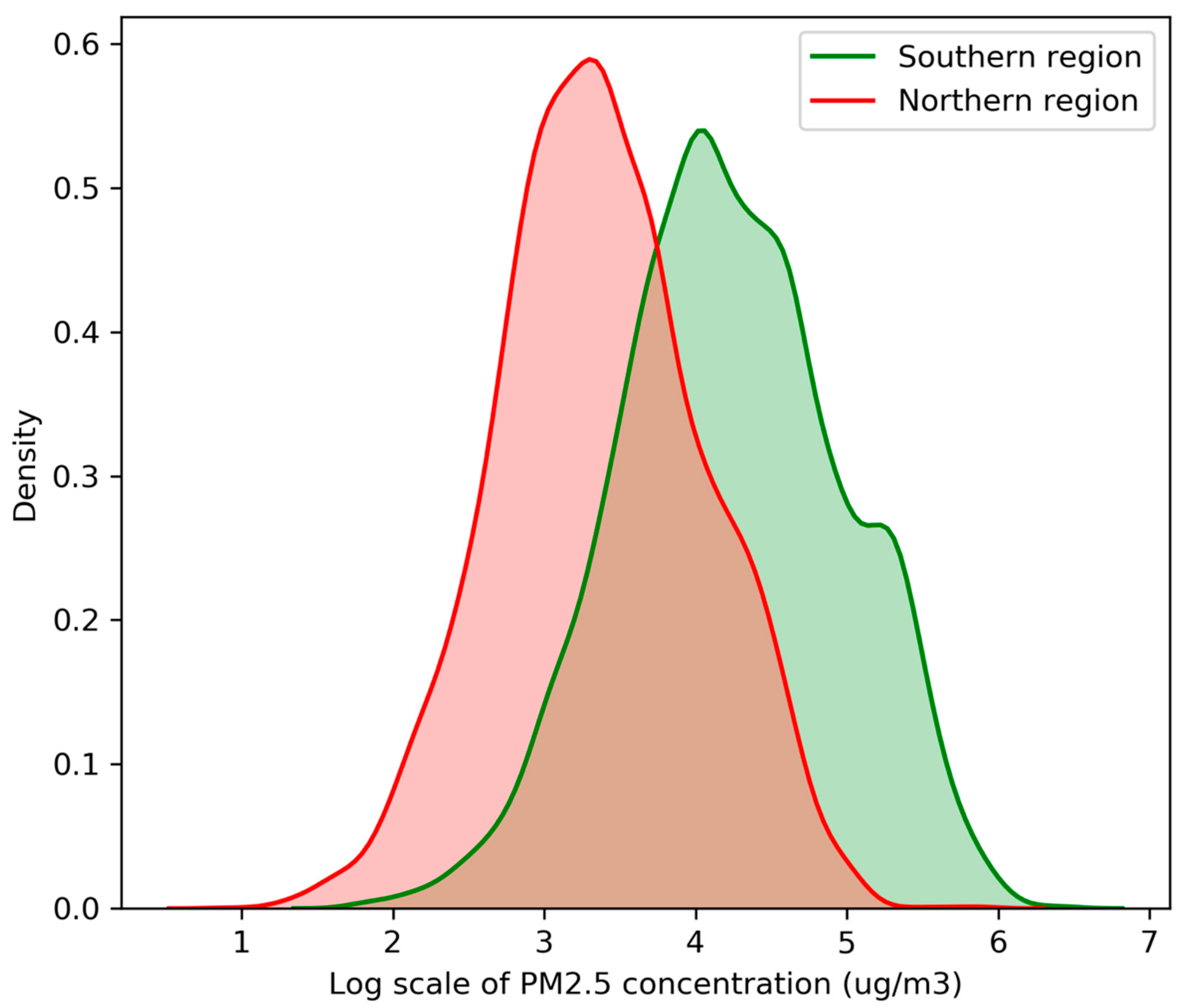
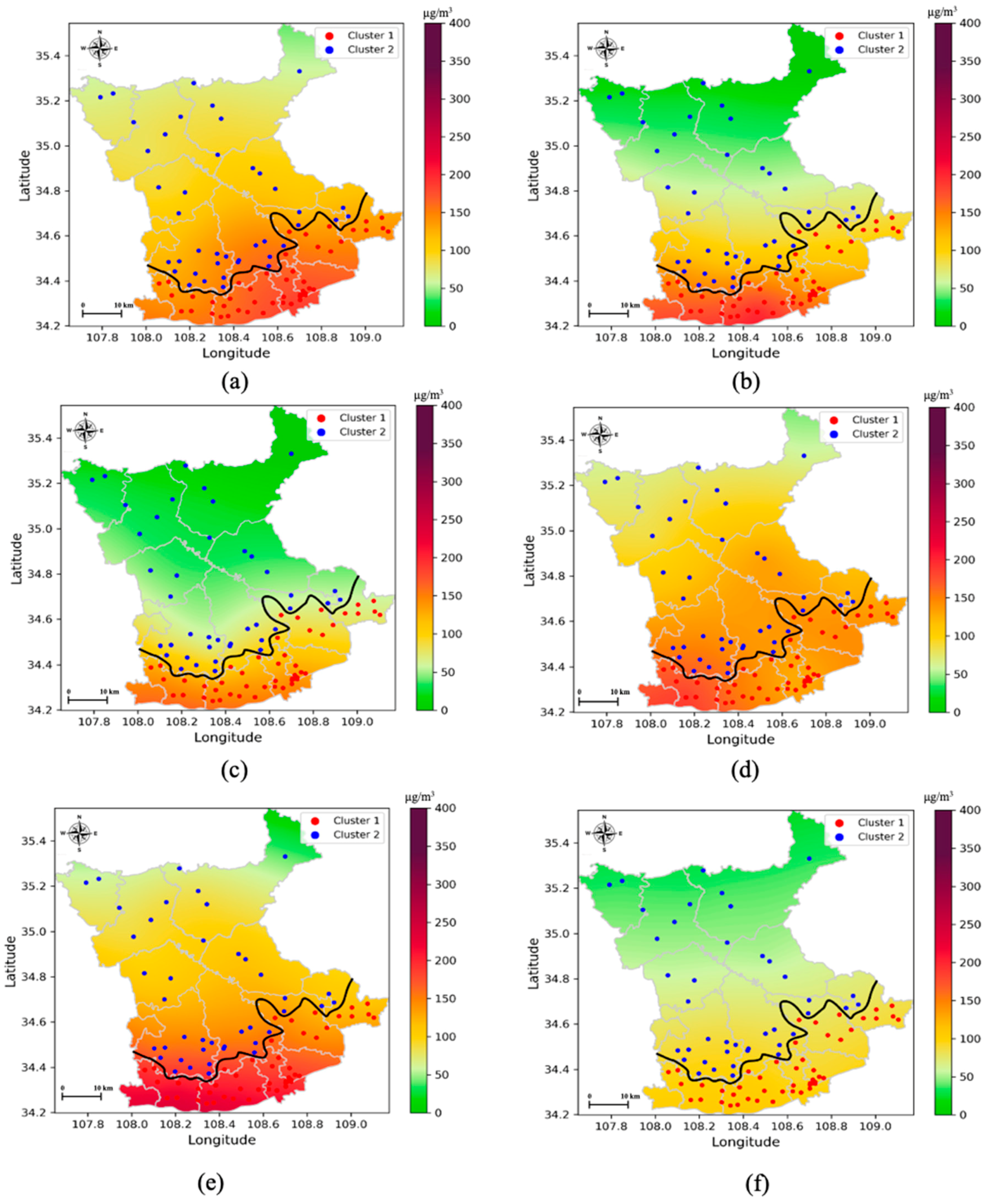
| District | Area (km2) | Southern (%) | Northern (%) | Population (Thousand) | Population Density (per km2) | GDP (Billion) | Industry GDP (Billion) | Number of Primary and Junior Schools |
|---|---|---|---|---|---|---|---|---|
| Qindu | 129 | 99.6% | 0.4% | 351 | 2729 | 38.3 | 24.9 | 58 |
| Weicheng | 17 | 100.0% | 0.0% | 213 | 12524 | 37.9 | 29.2 | 27 |
| Sanyuan | 577 | 55.1% | 44.9% | 412 | 714 | 24.0 | 14.3 | 78 |
| Jingyang | 569 | 72.4% | 27.6% | 315 | 554 | 7.5 | 1.3 | 79 |
| Qianxian | 1000 | 3.8% | 96.2% | 536 | 536 | 17.4 | 7.2 | 76 |
| Liquan | 1011 | 14.3% | 85.7% | 456 | 451 | 16.1 | 4.9 | 62 |
| Yongshou | 888 | 0.0% | 100.0% | 189 | 213 | 8.5 | 3.8 | 66 |
| Changwu | 570 | 0.0% | 100.0% | 172 | 302 | 10.0 | 6.3 | 45 |
| Xunyi | 1774 | 0.0% | 100.0% | 268 | 151 | 9.7 | 4.6 | 77 |
| Chunhua | 983 | 0.0% | 100.0% | 198 | 201 | 7.6 | 2.7 | 36 |
| Wugong | 392 | 95.9% | 4.1% | 417 | 1065 | 14.1 | 6.7 | 89 |
| Xingping | 453 | 99.9% | 0.1% | 506 | 1116 | 24.8 | 13.5 | 100 |
| Binzhou | 1181 | 0.0% | 100.0% | 333 | 282 | 21.7 | 15.7 | 146 |
© 2020 by the authors. Licensee MDPI, Basel, Switzerland. This article is an open access article distributed under the terms and conditions of the Creative Commons Attribution (CC BY) license (http://creativecommons.org/licenses/by/4.0/).
Share and Cite
Zhang, B.; Zhou, F.; Song, G. Regional Delimitation of PM2.5 Pollution Using Spatial Cluster for Monitoring Sites: A Case Study of Xianyang, China. Atmosphere 2020, 11, 972. https://doi.org/10.3390/atmos11090972
Zhang B, Zhou F, Song G. Regional Delimitation of PM2.5 Pollution Using Spatial Cluster for Monitoring Sites: A Case Study of Xianyang, China. Atmosphere. 2020; 11(9):972. https://doi.org/10.3390/atmos11090972
Chicago/Turabian StyleZhang, Bo, Fang Zhou, and Guojun Song. 2020. "Regional Delimitation of PM2.5 Pollution Using Spatial Cluster for Monitoring Sites: A Case Study of Xianyang, China" Atmosphere 11, no. 9: 972. https://doi.org/10.3390/atmos11090972
APA StyleZhang, B., Zhou, F., & Song, G. (2020). Regional Delimitation of PM2.5 Pollution Using Spatial Cluster for Monitoring Sites: A Case Study of Xianyang, China. Atmosphere, 11(9), 972. https://doi.org/10.3390/atmos11090972





